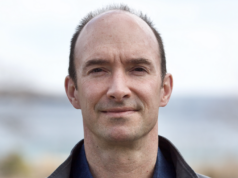 NeuroPace has announced that the first patient with Lennox-Gastaut syndrome (LGS)—a particularly severe form of childhood-onset epilepsy characterised by cognitive dysfunction and frequent seizures—was recently treated in its feasibility investigational device exemption (IDE) study.
NeuroPace has announced that the first patient with Lennox-Gastaut syndrome (LGS)—a particularly severe form of childhood-onset epilepsy characterised by cognitive dysfunction and frequent seizures—was recently treated in its feasibility investigational device exemption (IDE) study.
The study will see the company’s responsive neurostimulation (RNS) system, which has demonstrated safety and effectiveness in treating medically intractable focal onset seizures in people aged 18 years and older, also be tested as a treatment for LGS.
The first procedure in NeuroPace’s feasibility study took place at Emory Healthcare in Atlanta, USA and was performed by Robert Gross.
“An exciting aspect of this study is that the implant location for each patient is based on customised models of their brain connectivity,” Gross noted.
Overall, six study sites will enrol a total of 20 patients aged 12 years and older with LGS and drug-resistant generalised onset seizures.
NeuroPace received a US$9.3 million National Institutes of Health (NIH) grant through the Brain Research through Advancing Innovative Neurotechnologies (BRAIN) Initiative to evaluate its responsive neuromodulation technology in patients who suffer from LGS.
“The NIH looks for ideas that could be transformative, with the potential to change how LGS is treated today,” said Martha Morrell, chief medical officer of NeuroPace. “In addition to finding the best detection and stimulation settings for responsive neurostimulation in LGS, we are looking to identify changes in the recorded brain data that indicate whether the therapy is effective. These so-called biomarkers may help clinicians treat LGS and also facilitate future research, including the possibility of a larger clinical study into the mechanisms of the disease and treatment approaches.”
Presently, antiseizure medications are the standard of care for treatment of LGS. However, even with multiple medications, seizures are rarely controlled, and it is typical for people with LGS to experience increasing disability over their lifetime, according to a NeuroPace press release.
“Overall, treatment is rarely effective in LGS, and the outcome remains very poor,” added Tracy Dixon-Salazar, executive director of the LGS Foundation. “Those living with LGS need new treatment options for the many seizures, LGS-associated disorders and treatment side-effects our loved ones suffer. The impact of LGS extends to the whole family, as we shoulder this unpredictable disease, and try to manage the many physical, emotional and financial burdens. We need better treatments now.”













